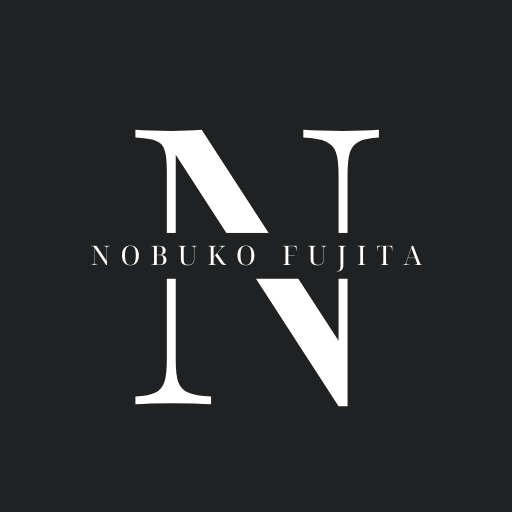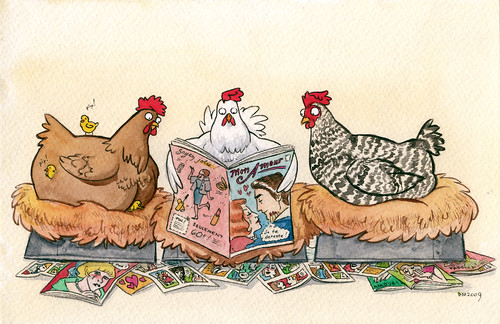(or, make friends and influence readers)
I am re-posting this to my personal blog. Someone in my office thought that my post was “inappropriate.” So let me be clear, opinions expressed in this blog post are my own, not those of the unit or institution for which I work.
On the 3rd day of 12 Apps of Christmas, my true love sent to me…
Three PressBooks,
Two ePortfolios,
And a Domain Of One’s Own!
I love to read. One of the joys of being an academic is that I have the luxury of reading books, journals, newspapers, blogs, tweets, etc. that interest me in my role, and I get paid for it. As a scholar, reading helps me stay abreast of the literature, of new knowledge created in my discipline, skill developments, trends in technologies, and innovative pedagogy.
I mean, what kind of comics did you think hens would read?
Dylan Meconis (2009). Animals for Animals: Three French Hens. Retrieved from https://flic.kr/p/7pjsgC
I also love to write. This is a good thing, because writing is an essential part of being an academic. Writing helps us construct our unique identity. The arduous process of writing and defending a dissertation shapes us into independent scholars with strong writing skills. Writing is also key to landing an academic position (cover letters are very important pieces of writing!), and securing tenure or promotion hinge on publishing output.
In academic writing, we write what we read when it comes to publishing. Traditionally, academic publishing focuses on writing peer-reviewed articles in high-impact journals, chapters in books edited by well-known colleagues, and entire books or monographs. Not surprisingly, committees reviewing our job applications and performance tend to focus on our ability to write what is valued and counts as scholarship or productive output in our discipline or field.
Teaching in a Digital Age (PressBook #1)
Bates, T. (2015) Teaching in a Digital Age: Guidelines for designing teaching and learning. Retrieved from https://opentextbc.ca/teachinginadigitalage/
In our teaching practice, we rarely have the luxury of time or resources to change the way we do things. In the last decade or so, the increase in the number of students taking online courses and the availability of online programs have given us an opportunity–whether we wanted to or not–to reflect on our teaching and course design processes.
In my teaching, the biggest change was embracing open educational resources, specifically, open textbooks. My own research focuses on instructional design for deep learning and knowledge building in higher education. I investigated online graduate courses and communities for my PhD, and have since published articles in knowledge creation in education, computer-supported collaborative learning, blended learning design, role playing, and innovative analytic methods of online discourse. Learning analytics, visualizations, dashboards, and such were technological tools that I harnessed to support the pedagogy. Check out my Google Scholar Profile if you like.
So adopting an open textbook was a change and took me in a different direction in my growth as a teacher.
Tony Bates (2015) writes,
“Over the last 10 years there has been developments in open learning that are beginning to impact directly on conventional institutions. The most immediate is open textbooks…Open textbooks are digital textbooks that can be downloaded in a digital format by students (or instructors) for free, thus saving students considerable money on textbooks”
In Exploring the Edges of Online Teaching and Learning, an online course that I taught earlier this year, I used a couple of sections from Chapter 2 in Bates’ (2015) open textbook that was produced using PressBooks.

I am pleased to share that a colleague in the Faculty of Education who completed the course plans to use this open textbook in their own teaching of learning theories.
Press a Book in PressBooks: Pension Finance and Management (#2),

Dr. Rajeeva Sinha of the Odette School of Business is authoring an eCampusOntario-funded open textbook called Pension Finance and Management.
After attending Robin deRosa’s keynote at the Technology Enabled Seminar and Showcase (TESS 2016, June), Rajeeva was inspired to write this open textbook.
Rajeeva is a masterful storyteller. Despite my attempts at developmental editing, Ryan Frith’s graphic design talent, and Erica Lyons’ sharp copy editing, the textbook still fails to capture his warmth and verisimilitude. Post tenure, Rajeeva has focused his research efforts on non-profit organizations. He has been involved in many community efforts for changing the world to make it a better place. The following video captures a little bit of what his stories are like in person:
Caveat: this open textbook book is very much a work in progress. Rajeeva keeps writing and re-writing the text as he teaches with the textbook, for a couple of reasons:
First, Rajeeva is reflecting on action and reflecting in action (Schon, 1983) as he taught this course in Winter 2018 and again as he is teaching in Fall 2018. The process of authoring this open textbook has fundamentally impacted the way Rajeeva views his own teaching practice as a finance professor. Like junior colleagues, students are providing feedback on the content, learning design, usability, accessibility, etc.
“Working on this open textbook in PressBooks has made me realize that… students need more activities to learn the materials in the textbook. They need to do the activities to learn the design of pensions, investments and governance” – Rajeeva Sinha
In January, before Winter 2019 term begins , Rajeeva and I will have a book sprint (of sorts) to infuse activities, multimedia (e.g. video, H5P interactive elements, etc.) into the text in PressBooks, and publish Module 2, and Module 3, which are currently private.
Making Open Textbooks with Student Partners (#3)
A Guide to Making Open Textbooks With Students
https://press.rebus.community/makingopentextbookswithstudents/
Second, Rajeeva and I include students as partners in developing content for the book. As a design-based researcher, I treat each term that Rajeeva teaches with the book as a design iteration, where student participate in making an open textbook and create knowledge. Together, we develop solutions (i.e. interventions) by analyzing the students’ feedback (and soon, annotations) on the PressBooks site.
Rajeeva also refines (i.e. completely rewrites) swathes of content as he reflects on his scholarly teaching and–YES!!–disciplinary research in Finance.
We are trying to enact critical digital pedagogy and open pedagogy on this SoTL project. In addition, Rajeeva is in the process of co-authoring a research article with a student who contributed to making the textbook. How cool is that?!
Admittedly, pensions are not always an exciting topic of study for students in their early 20s. Rajeeva gets that intertemporal choice is a complex process to understand. He decided to ask students to contribute to authoring the textbook by gathering stories of retirement. For a course assignment, Rajeeva asks students to interview people that they have existing relationships with, who are nearing retirement or already living in retirement. Through a series of scaffolding prompts or questions students gather stories about retirement.
The resultant stories of retirement makes this open textbook more relevant for B.Comm. students and also more accessible for a lay audience. Since it’s an open textbook, anyone with the link can learn about pension finance management. Beyond learners in a B.Comm., MBA, or Master of Management program, the general public can read this book to learn about preparing for their own retirement.
Want to learn more about using PressBooks?
Stay tuned. I will offer workshops next term on how you can leverage this app for your own teaching or scholarship. (Update: If my institution will let me)
Rest assured that PressBooks looks just like WordPress and easy to use.
If you want to make friends by co-authoring, PressBooks makes collaboration easy. Say good bye to exchanging ugly, colourful Word documents with Track Changes. Don’t you hate it when you work on the wrong version?!
If you can tell a story or write a narrative using a word processing program (e.g. Word, Google Drive), you can create professional print and ebook editions of your book. You can export your book in many file formats (MOBI for Kindle; ePub for iBooks, Nook, Kobo, Smashwords for reading on a device; PDF for printing or print-on-demand).
You influence more readers when they can access the text in their preferred format. A digital eBook is lit, so you can even read it at night in a car, plane, or train (Caution: Do not read and drive). The digital format lets you increase font and increase contrast to increase legibility. Alternatively, you can use a screen reader to make the eTextbook into an audio book.
Making your book a free, open book makes it more accessible for readers in developing countries, institutions with small library collections, on a budget, etc.





Leave a Reply